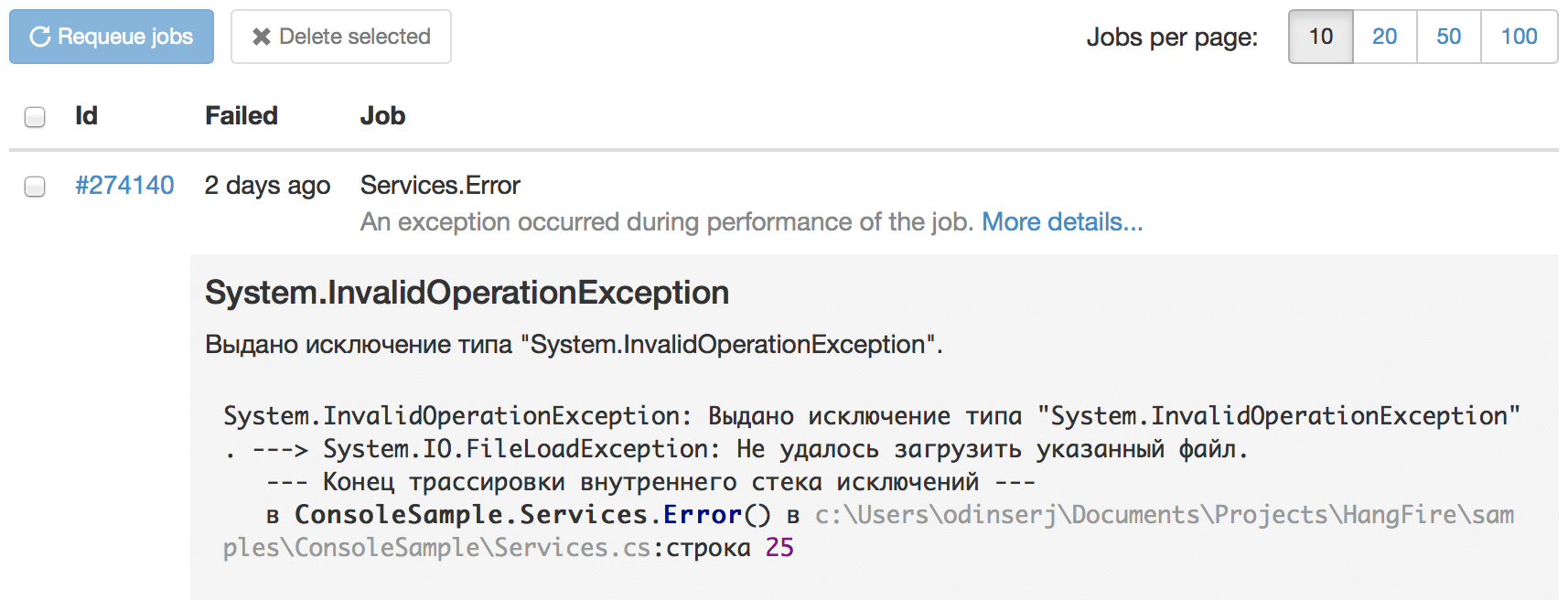Dealing with Exceptions¶
Bad things happen. Any method can throw different types of exceptions. These exceptions can be caused either by programming errors that require you to re-deploy the application, or transient errors, that can be fixed without additional deployment.
Hangfire handles all exceptions occurred both in internal (belonging to Hangfire itself), and external methods (jobs, filters and so on), so it will not bring down the whole application. All internal exceptions are logged (so, don’t forget to enable logging) and the worst case they can lead – background processing will be stopped after 10 retry attempts with increasing delay modifier.
When Hangfire encounters external exception that occurred during the job performance, it will automatically try to change its state to the Failed one, and you always can find this job in the Monitor UI (it will not be expired unless you delete it explicitly).

In the previous paragraph I said that Hangfire will try to change its state to failed, because state transition is one of places, where job filters can intercept and change the initial pipeline. And the AutomaticRetryAttribute class is one of them, that schedules the failed job to be automatically retried after increasing delay.
This filter is applied globally to all methods and have 10 retry attempts by default. So, your methods will be retried in case of exception automatically, and you receive warning log messages on every failed attempt. If retry attempts exceeded their maximum, the job will be move to the Failed state (with an error log message), and you will be able to retry it manually.
If you don’t want a job to be retried, place an explicit attribute with 0 maximum retry attempts value:
[AutomaticRetry(Attempts = 0)]
public void BackgroundMethod()
{
}
Use the same way to limit the number of attempts to the different value. If you want to change the default global value, add a new global filter:
GlobalJobFilters.Filters.Add(new AutomaticRetryAttribute { Attempts = 5 });
If you are using ASP.NET Core you can use the IServiceCollection extension method AddHangfire. Note that AddHangfire uses the GlobalJobFilter instance and therefore dependencies should be Transient or Singleton.
services.AddHangfire((provider, configuration) =>
{
configuration.UseFilter(provider.GetRequiredService<AutomaticRetryAttribute>());
}